Lucy Ovenden – 29 June, 2017
Draped from ceiling to floor and lit from above, the softness of the painted velvet contrasts with the polished concrete floor, while movement within the room and the slight draft from the hidden exterior window bring the star cluster delicately to life. The use of white velvet, instead of the assumed black, gives the dyes and acrylics a greater ability to make the colours vivid, whilst adding an impressive luminosity to the starry dreamscape.
Hannah Beehre‘s latest work Westerlund 2 is an inviting and immersive experience. The sheer scale of the draped velvet, its vivid colours, and the symbolic links between astronomy and The Physics Room, enable the viewer to be transported into a realm of mystical fantasy.
The sublime beauty of the natural wonders that surround our planet have previously been represented by Beehre in an earlier magnificent study of nebulae that was first exhibited in 2015. The new painting, which is brought to life by Swarovski crystals, dye and acrylic paints on white velvet, depicts images taken from around our galaxy by the Hubble Space Telescope. While Beehre’s previous nebula works ranged individually from 350 mm x 350 mm to 1700 mm x 1200 mm, Westerlund 2 is an awe inspiring 3000 mm x 11000 mm. Such an increase in size separates Westerlund 2 from its predecessors; it is clearly that scale which provides its impact.
Past nebula paintings have included two of the greatest sights of our Southern skies: the Tarantula Nebula, one of the most detailed nebulae in the sky, located in the Large Malleganic Cloud which is estimated to contain 10,000 million stars; and the Eta Carinae Nebula, born of the exploded star Eta Carinae and as bright as four million suns. Westerlund 2 is itself a star cluster, located in our well-known Milky Way.
The synergy between this astronomically inspired hanging and the exhibition’s location at The Physics Room, evokes ideas of ancient philosophers and the evolution of astrophysics. No area of study has captivated the human mind for as long as astronomy, and its influence on our knowledge of the world is unequivocal. From navigation and mathematics to ideas of fate and omens, it seems we are surrounded by possibility and so have turned to the stars for answers for centuries. Therefore I would argue that it is only right to exhibit a work that seems an astronomical and experimental task, in size and in detail, at a gallery so aptly named.
Westerlund 2 is hung as an all-encompassing curtain in The Physics Room’s South Gallery. Draped from ceiling to floor and lit from above, the softness of the painted velvet contrasts with the polished concrete floor, while movement within the room and the slight draft from the hidden exterior window bring the star cluster delicately to life. The use of white velvet, instead of the assumed black, gives the dyes and acrylics a greater ability to make the colours vivid, whilst adding an impressive luminosity to the starry dreamscape.
The immersive nature of the work is influenced by the Black and White Lodges that featured in David Lynch’s Twin Peaks (1990) television series; a darkly lit room draped in red which is said to bring to life shadows and parallels. Such mirroring is also evident in Beehre’s drapery. The initial third of the space boasts of enchantingly soft colours - pinks, purples, oranges, and blues - yet the remainder of the velvet is coated in fiery oranges, murky greens, and dark navy. At first glance the room is seraphic and inviting, but once one is fully immersed in the space it feels as if you could be sucked into a beckoning black hole.
Westerlund 2 is a commanding piece, not only in scale but also in its ability to envelop the viewer through the depth of sumptuous colour, movement and fantasy.
Lucy Ovenden
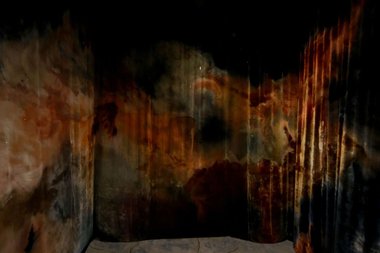
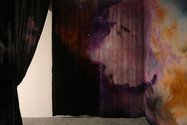
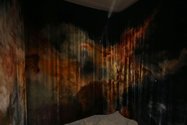
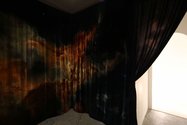

 Two Rooms presents a program of residencies and projects
Two Rooms presents a program of residencies and projects Advertising in this column
Advertising in this column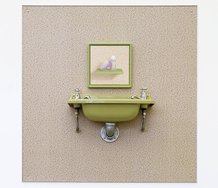
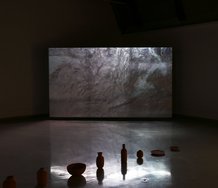
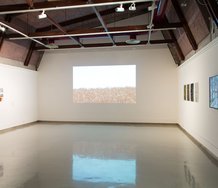
This Discussion has 0 comments.
Comment
Participate
Register to Participate.
Sign in
Sign in to an existing account.